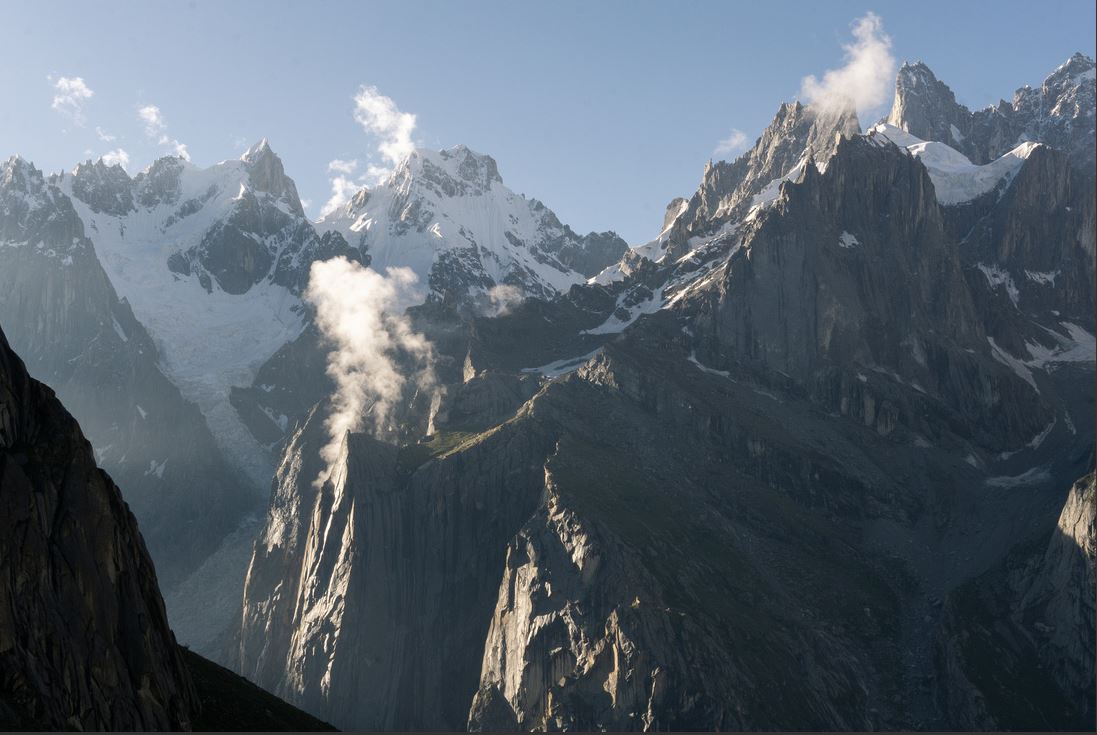[:it]
storia di una valle nascosta del Karakorum circondata da splendide pareti di granito
di Matteo Bedendo – alpinista, fotografo / edit Federico Bernardi per MontagnaMagica
Il Karakorum, alpinisticamente parlando, nell’immaginario collettivo , è spesso associato alle grandi vette che si ergono lungo il Ghiacciaio Baltoro, teatro di epiche spedizioni e scalate sin dall’inizio del 1900.
Il K2, i Gasherbrums, il Broad Peak, il Chogolisa e le Trango Towers , il Laila Peak : le montagne che richiamano alla mente grandi sfide del passato e del presente.
Eppure il Karakorum include decine di vallate più nascoste e meno conosciute, meno accessibili ma con vallate, ghiacciai, montagne e pareti di granito di straordinaria bellezza e potenzialità alpinistica, di altezze comprese tra i 4500 metri e gli oltre 7000, che riservano – ai pochi che vi si avventurano – emozioni e ricchezza di possibilità di esplorazione praticamente inesauribili.
Matteo Bedendo, un giovane e talentuoso fotografo e alpinista, ha esplorato, fotografato e scritto di uno di questi luoghi, nel 2016 : la Nangma Valley, situata a circa 50 km a sud e parallela al grande ghiacciaio del Baltoro e del K2.
Vi proponiamo di seguito il suo straordinario report storico e in calce all’articolo la gallery fotografica.
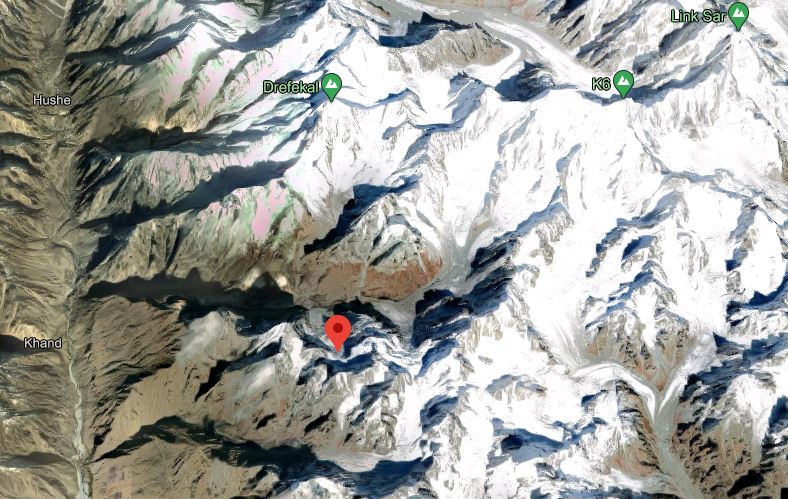
La scorsa estate ho avuto il privilegio di fotografare la valle più sorprendente che abbia mai visto.
La valle di Nangma è un luogo esteticamente sublime, segretamente incastonato nel cuore del Karakorum.
Benché abbia visto qualche esploratore occidentale già negli anni sessanta, questa valle rimane tutt’ora sconosciuta a buona parte degli appassionati di alpinismo e arrampicata. Chiunque conosca questa catena montuosa ha probabilmente sentito parlare della valle di Charakusa, dominata dall’immensa parete nord del K6; tuttavia la valle che arriva a questa montagna da sud – chiamata Nangma – deve ancora mostrare a buona parte del mondo il suo immenso potenziale alpinistico e naturalistico.
Quando Eduard Koblmiller mise piede nella valle durante la vincente spedizione al K6 del 1970, la descrisse come un luogo di “insolita e primordiale bellezza”.
La valle di Nangma sembra un dipinto impressionista, fatta di contrasti di colore estremi e linee astratte che puntano il cielo con stupefacente verticalità. Qualcuno la definisce la “Yosemite del Pakistan” benché qua, oltre a chilometrici castelli di granito, ci sia posto anche per l’alpinismo d’alta quota – tecnico e difficile – tipico delle montagne del Karakorum. La bellezza della valle è quasi commovente e, al contrario di altri e ben più celebri luoghi, i campi base sono solo ad un intensa giornata di cammino dalla strada.
La valle è raggiungibile dal villaggio di Kande, lungo la valle di Hushe. Deve esserci stato un lungo momento di crisi di creatività dal momento che quasi tutti i villaggi si chiamano Kande, Khane, Kunde o Kanday. Il Kande che dovrete raggiungere è l’ultimo.
Avere con sé una guida è obbligatorio, benché secondo la legge questa sia un “open zone”: al checkpoint militare lungo la valle i militari fermano chiunque ne sia sprovvisto. Fortunatamente non è richiesto alcun ufficiale di collegamento o alcun briefing/debriefing a Islamabad – tutto può essere quindi organizzato direttamente a Skardu, con gran risparmio di tempo, costi e burocrazia. La valle di Hushe vede ogni anno qualche alpinista/trekker in uscita dal Gondogoro La, celebre passo d’alta quota che conduce – con percorso alternativo al classico – a Concordia e al K2. Ma a Kande non esiste alcuna guesthouse o struttura per turisti; pochi anni fa l’intero villaggio è stato distrutto da una frana ed è stato ricostruito poco più a nord. La vostra guida, se siete fortunati come lo siamo stati noi, potrà rimediarvi una stanza degli ospiti a casa di qualche contadino. Campeggiare lungo la valle è sicuramente un opzione; eventuali portatori possono essere reclutati direttamente la sera prima, nel villaggio.
Benché si abbia il grande sospetto che questa valle diventerà famosa per il granito, le vie di pura roccia e le immense torri come l’Amin Brakk, non si può iniziare a parlare di una montagna diversa dal K6 (7282m).
Non solo la prima salita al K6 è stata effettuata proprio da questa valle, ma è tutt’ora l’unica salita alla cima principale. L’impressionante via aperta da Raphael Slawinski e Ian Westeld nel 2013 sulla parete nord – che li ha portati alla vittoria del Piolet d’Or – si è conclusa sulla cima Ovest.
La vera cima del K6 è stata raggiunta solamente nel 1970 da una spedizione Austriaca che ne ha calcato la vetta con quattro membri: Eduard “Edi” Koblmueller, Gerhard Haberl, Christian von der Hecken and Gerd Pressl. Per Koblmuller si tratta del primo grande successo in Asia, che sarà seguito da una serie di impressionanti salite di altissimo livello soprattutto in Karakorum: sarà il primo a raggiungere la vetta principale del Chogolisa (salvandosi miracolosamente dopo il cedimento di una cornice) e salirà vie difficili su leggendarie montagne quali Batura, Cho Oyu, Diran, Rakaposhi e Nanga Parbat. La “via Austriaca” attraversa tutta la base della montagna e supera un colle fino ad attaccare la “spalla” dalla valle adiacente (l’accesso diretto da qua si sarebbe rivelato molto più lungo) e raggiungere poi la cresta sud-est.
I salitori valutano alcuni tratti nella parte alta come V+ /A2. Molte corde fisse sono state usate. L’anno prima una spedizione Italiana ha tentato di scalare il K6 da un’altra via: invece di proseguire verso la “spalla” la via sale bruscamente a sinistra lungo una rampa di ghiaccio e poi segue la cresta ovest (attraversando il K6 West) fino ad una serie di pinnacoli rocciosi che, apparentemente, si sono rivelati troppo difficili. Il primo tentativo risale invece ad una spedizione inglese del 1961. Da segnalare una nuova recente via (Bennet – Zimmerman, USA, 2015) al K6 West, con difficoltà di misto fino ad M6 e ghiaccio fino a 90°.
Kapura (6544m) è una elegante piramide di roccia e ghiaccio che si innalza dalla cresta ovest del K6. Celebre per essere stata salita solo in tempi recenti – nel 2004 – da Steve House, ha visto una sola salita dalla Nangma Valley nel 2013, da parte di una coppia di alpinisti Portoghesi. Paulo Roxo e Daniela Teixeira hanno realizzato una via che termina sulla cima sud a circa 6350m di quota: si chiama “Never Ending Dreams”, si sviluppa per 1300 metri e presenta difficoltà di M4 e ghiaccio fino a 70°.
La valle di Nangma, come ho detto prima, ha potenziale per diventare una Yosemite dell’Oriente, con pareti perfette e asciutte che si innalzano direttamente dal campo base. Tuttavia la montagna simbolo di questa valle non ha una parete comoda, né tanto meno vicinissima ad un eventuale campo base.
La cima è una confusa festa di cornici e l’uscita dalla parete non può avvenire senza un equipaggiamento da ghiaccio e una discreta abilità nel muoversi su questo tipo di terreni.
L’Amin Brakk è uno dei monoliti di roccia più imponenti del Karakorum e del pianeta. Nonostante la quota non estrema (circa 6000 metri, nonostante sulle mappe figuri un po’ più basso), essa è il vero protagonista di questo remoto angolo di Pakistan. La sua parete ovest ha l’aspetto di un siluro alto milleduecento metri e terribilmente verticale. Anzi, la prima parte presenta un caso più unico che raro di placche strapiombanti. La compattissima “pancia” che si innalza dalle marce e ghiacciate rocce basali non ha infatti l’aspetto di qualcosa che possa essere scalato in libera da un essere umano, benché non sia da escludere un sistema di fessure che la attraversi. E’ un El Capitan dell’asia, ma è ben più difficile – e grande: le guide locali ribadiscono fieramente che esso è “ben più arduo delle Torri di Trango”.
Scoperta di recente, ha visto un primo tentativo spagnolo arenarsi a 300 metri dalla cima nel 1996, dopo quindici giorni di permanenza in parete. E’ solo nel 1999 che altri Spagnoli, Silvia Vidal, Pep Masip e Miguel Puigdomenech, raggiungono la cima dopo trenta giorni consecutivi in parete. La loro via, “Sol Solet” ha uno sviluppo di ben 1650 metri e buona parte dei tiri sono stati scalati in artificiale, con difficoltà in artificiale fino ad A5 ed in libera fino a 6c+. Oltre 500kg di materiale sono stati trasportati in parete (quasi la metà era acqua) e una trentina di spit sono stati piantati durante la salita, concentrati soprattutto nei tiri dove il granito si è rivelato compatissimo e liscio; due giorni di calata sono stati necessari per scendere e ripulire interamente la parete. La montagna è stata chiamata Amin Brakk come omaggio al loro cuoco, Amin. Pochi giorni dopo la cima è stata raggiunta di nuovo da una cordata Ceca: “Czech Express” sale più a destra rispetto a “Sol Solet” e ha difficoltà di artificiale di A3 e uno sviluppo maggiore rispetto alla via degli Spagnoli. Il ghiaccio arriva a 70°.
La via “Namkor” di Adolfo Madinabeitia e Juan Miranda sale invece tra le due vie sopracitate, ha uno sviluppo di 1550 metri ed ha richiesto trentun giorni di permanenza in parete, di cui buona parte passati nel portaledge a causa del maltempo. Ben diciassette dei trentuno tiri sono stati saliti in libera (fino al 6b+), mentre le difficoltà maggiori sono state incontrate nei due tiri di A5.
Nel 2004 una spedizione Russa, dopo aver salito la montagna in parte per una nuova via, ha visto il primo e unico B.A.S.E jump della sua storia. Valery Rozov (scomparso di recente durante un salto sull’Ama Dablam) si è lanciato da un punto vicino alla cresta sommitale a trecento metri dalla cima e, nonostante sia passato pericolosamente vicino ad una cengia durante i primi secondi di volo, l’intera spedizione si è conclusa con un successo.
Il campo base classico delle spedizioni sul lato destro orografico della valle è un luogo pittoresco e magico. Le pareti che lo sovrastano sono di per sé un obiettivo appagante per un purista della roccia. Zang Brakk e Denbor Brakk sono due cime di 4800 metri che non passano certo inosservate per estetica e verticalità – e sono anche un ottimo ripiego nel caso gli obiettivi più ambiziosi della valle (leggasi Amin Brakk) si rivelassero.. troppo ambiziosi, appunto. Il granito è compatto e colorato e le possibili vie da salire sono ancora tantissime.
Zang Brakk è sicuramente una delle torri più erotiche della valle, complice un aspetto davvero attraente e – soprattutto – l’accesso istantaneo: la parete inizia letteralmente al campo base. Lo sviluppo delle vie che arrivano dalla base alla cima oscilla tra i 540 e i 750 metri. La prima salita si deve nuovamente a Pep Masip e Silvia Vidal che nel 1998 hanno perlustrato l’area per poter poggiar lo sguardo personalmente sull’Amin Brakk, che avrebbero scalato l’anno successivo. La via è lunga 540 metri e la maggior parte dei tiri ha difficoltà in artificiale fino ad A3. La coppia riferisce di aver trovato, pochi metri oltre l’attacco della via, dei vecchi spit di orgine sconosciuta. Nel 2000 sono nate tre nuove vie. Due vie sono state aperte da un team Coreano e presentano difficoltà simili – 6a + A4-. La terza via è stata aperta da una coppia di arrampicatrici britanniche e termina a poca distanza dalla cima. “Ramchikor” è lunga 600 metri ed è stata gradata 5c + A2 dalle apritrici. Una recente addizione è la via “Hasta la Vista David”, di Silvestro Stucchi, Elena Davila, Anna Lazzarini ed Enea Colnago. La via percorre la parete sud ovest per ben 750 metri con difficoltà di VI+ e A1.
Libby Peter e Louise Thomas, autrici di “Rachikor” sullo Zang Brakk, sono anche le prime salitrici del Denbor Brakk – per una via piuttosto laboriosa (sfasciumi e cresta) dalle difficoltà tecniche moderate. Nel 2009 l’ovvia cresta sud della montagna è stata scalata (fino alla cima sud) dagli Americani Estes e Hepp, che l’hanno descritta come una delle peggiori arrampicate della loro vita, buona parte a causa dell’intenso lavoro di “giardinaggio” che i due si sono trovati a dover praticare. Una via Polacca più diretta si svolge sul più grosso dei tre pilastri che caratterizzano la montagna ed è stata chiamata Dancer in the Dark. Benchè il Denbor Brakk sia anch’esso vicinissimo al campo base, esso richiede (salvo fare un giro molto più lungo) l’attraversamento di un impetuoso fiume-cascata glaciale. Necessaria una corda fissa per evitare grossi rischi ad ogni attraversamento.
Dopo questo lungo elogio al granito perfetto della valle è il caso di spezzare l’articolo con una stupenda piramide di ghiaccio: Drifika (6447m). La montagna, il cui nome è una storpiatura di una parola locale che significa “Palazzo dei Fantasmi” è piuttosto nascosta. La sua presenza non è intuibile dalla valle principale e per arrivarci bisogna superare di un bel pezzo l’Amin Brak – attraversando infiniti pendi morenici. Le poche persone che hanno posato gli occhi sul suo profilo perfetto probabilmente l’hanno fatto da Nord, dalla valle di Charakusa – dove sono avvenute anche la prima e seconda ascensione (rispettivamente, Giapponesi e Italiani). Da sud la montagna si presenta altrettanto splendida, ma ultimamente un po’ flagellata – nella stagione estiva – dal torrido caldo Pakistano: foto del 2004 mostrano ripidi couloir di neve abbondante che, allo stato attuale, sono stati sostituiti da cumuli di sfasciumi in costante crollo. La roccia qua non è più granito ma, con una buona copertura, il Drifika mostra una serie di linee logiche e interessanti. Delle poche spedizioni che la montagna ha visto da questo versante, è quella Slovena del 2004 che più si è avvicinata al successo. Il loro dietro front a poche decine di metri dalla cima è stato obbligato dopo l’aver assistito all’incidente mortale capitato ad un membro della spedizione basca, poche centinaia di metri sotto di loro. La via di Matija “Matic” Jost e compagni si chiama “White River” ed è tanto logica quanto bella: l’esposizione è garantita per i 1200 metri di via (60° ghiaccio, un breve salto a 90° su seracco). Allo stato attuale la parte bassa non è percorribile nei mesi più caldi a causa degli interminabili crolli di sfasciumi. Nel 2007 una nuova via Ceca raggiunge la cima Ovest attraverso la cresta sud-ovest (M4, roccia marcia).
Nella valle glaciale che vede fronteggiarsi Amin Brakk e Drifika, c’è spazio per un altra salita su ghiaccio. Korada Peak (5944m) è stato salito dagli stessi Sloveni di “White River”, Gregor Blazic, Matija Jost, Vladimir Makarovic. Pur non essendo enorme per gli standard del Karakorum (ha il difetto di trovarsi tra due montagne stupende) ha un’aspetto remoto e attraente. La via è stata salita e scesa in 25 ore e benché per buona parte sia “solo” un ripido pendio di ghiaccio, supera una difficile fascia rocciosa alta sessanta metri. E’ valutata TD+ dagli apritori.
Una montagna piuttosto evidente nella valle si chiama Shingu Charpa (o “Great Tower”, ca. 5800m).
Scalata per la prima volta dai Coreani Shin Dong-Chul, Bang Jung-Ho e Hwang Young-Soon nel 2000. Dopo aver scartato l’idea di salire la cresta nord, hanno attrezzato con corde fisse l’ovvio couloir nevoso sulla parete ovest e hanno poi proseguito su roccia delicata – sempre a rischio crolli a causa anche delle frequenti precipitazioni. Il vero motivo dell’interesse verso questa montagna rimane però la sua cresta nord. Essa è alta quasi milleseicento metri ed è un capolavoro di estetica. Tanto logica quanto ciclopica, la sua storia rimane un po’ controversa. Nota e tentata già dal 2000, ha visto un team russo percorrerla quasi integralmente fino alla cima nel 2006. I russi però hanno effettuato la salita in due tempi, cioè scendendo a circa un terzo e poi tornando nello stesso punto attraverso una scorciatoia lungo la parete est. Inoltre, benché Igor Chaplinsky sostenga di aver raggiunto la cima in libera, è ormai noto che i tre non hanno scalato gli ultimi cento metri di ghiaccio a causa di “mancanza di materiale”. Anche l’aver salito in libera tutta la cresta si è rivelato un falso. Destino simile per gli Americani Kelly Cordes e Josh Wharton che nello stesso anno sono stati respinti dal durissimo ghiaccio nero sommitale dopo aver faticosamente percorso tutta la cresta (con molti tratti in artificiale). Percorrere questa cresta integralmente, fino alla cima, rimane una delle sfide aperte più ambiziose della valle.
La seconda salita della montagna è avvenuta l’anno successivo da parte di Alexander Klenov, Mikhail Davy e Alexander Shabunin – team Russo – attraverso la parete est. La via si chiama “Never More” e interseca sul finale la cresta nord: il grado è altissimo e lo sviluppo piuttosto elevato (1600m, 7a, M5, A3).
Le possibilità nella valle sono infinite, sono da citare però la misteriosa Changui Tower (spesso “Changi Tower”), la cui parete est è già stata scalata almeno due volte.
L’altezza della torre dovrebbe attestarsi sui 5800 metri, sebbene alcune vecchie mappe e report indichino 5300. La montagna si trova sul versante meno celebre dell’Amin Brakk, dove la valle curva in direzione del K6, ed è probabilmente la seconda struttura più alta dell’aggressivo e complesso massiccio di granito. Una seconda Changi Tower (6500m), nota già negli anni settanta e invisibile dalla valle di Nangma, si alza alla base più orientale del K6, e presenta una difficile scalata d’alta quota su misto e ghiaccio, con roccia molto compatta.
Una delle torri dall’accesso più rapido (perlomeno tra quelle di aspetto definito e imponente) è la Logmun Tower (o “Green Tower”, ca 4600m). Avendo posto il campo base sul fondo della valle e non sulla destra orografica (quindi nel caso Amin Brakk, Zang Brakk e compagni non siano di vostro interesse..) questo enorme pilastro triangolare è la struttura verticale più ovvia. Le poche vie tracciate presentano arrampicata libera fino al 6a/6b+ e qualche punto in artificiale fino ad A3: l’arrampicata è sempre molto continua ed impegnativa, e spesso le fessure sono da ripulire dalla vegetazione. Lo sviluppo resta notevole anche se si tratta di un pilastro di quota non esagerata: si parte da un minimo di 600 metri ad un massimo di 850.
Lungo tutta la valle esistono centinaia di torri e pareti vergini di granito perfetto, nonché una discreta scelta di boulder. Nonostante un buon numero di remotissime pareti di ghiaccio e una montagna difficile, alta e leggendaria come il K6, è ovviamente il granito a fare da padrone da queste parti.
La Yosemite del Pakistan è pronta ad accogliere gli scalatori più esigenti che, oltre ad una buona dose di fantasia e abilità tecnica, sono alla ricerca di un nuovo paradiso terrestre, remoto ma accessibile, dove vivere un alpinismo moderno ed esplorativo allo stesso tempo
[:en]
story of a hidden Karakorum valley surrounded by beautiful granite walls
by Matteo Bedendo – photographer, climber / edit Federico Bernardi (c) MontagnaMagica
The Karakorum, in the collective imagination is often associated with the great peaks that rise along the Baltoro Glacier, the scene of epic expeditions and climbs since the early 1900s.
K2, Gasherbrums, Broad Peak, Chogolisa and Trango Towers, Laila Peak: the mountains that bring to mind great challenges of the past and present.
Yet the Karakorum includes dozens of more hidden and less known places, less accessible but with valleys, glaciers, mountains and granite walls of extraordinary beauty and mountaineering potential, with heights ranging from 4500 meters to over 7000 meters, which provide- for the few who venture there – climbing inexhaustible thrills and plenty of exploration possibilities.
Matteo Bedendo, a young and talented photographer and mountaineer, explored, photographed and wrote about one of these places in 2016: the Nangma Valley, located about 50 km south and parallel to the great Baltoro and K2 glacier.
We propose below his extraordinary historical report and below his photo gallery.
Nangma Valley – pin on Amin Brakk peak (Google Maps)
Last summer I had the privilege of photographing the most amazing valley I have ever seen.
The Nangma Valley is an aesthetically sublime place, secretly nestled in the heart of the Karakorum. Although I saw some western explorers as early as the sixties, this valley still remains unknown to most mountaineering and climbing enthusiasts. Anyone who knows this mountain range has probably heard of the Charakusa valley, dominated by the immense north face of K6; however, the valley that reaches this mountain from the south – called Nangma – has yet to show its immense mountaineering and naturalistic potential to a large part of the world.
When Eduard Koblmiller set foot in the valley during his successful K6 expedition in 1970, he described it as a place of “unusual and primordial beauty”. The Nangma Valley looks like an impressionist painting, made of extreme color contrasts and abstract lines that point the sky with astonishing verticality. Someone calls it the “Yosemite of Pakistan” although here, in addition to kilometer-long granite castles, there is also room for high altitude mountaineering – technical and difficult – typical of the Karakorum mountains. The beauty of the valley is almost touching and, unlike other and much more famous places, the base camps are only an intense day’s walk from the road.
The valley can be reached from the village of Kande, along the Hushe valley.
There must have been a long moment of creativity crisis since almost all the villages are called Kande, Khane, Kunde or Kanday. The Kande you need to reach is the last one. Having a guide with you is mandatory, although according to the law this is an “open zone”: at the military checkpoint along the valley, the military stops anyone without one. Fortunately, no liaison officer or briefing / debriefing is required in Islamabad – everything can then be arranged directly in Skardu, saving time, cost and bureaucracy. The Hushe valley sees every year some mountaineers / trekkers leaving the Gondogoro La, the famous high altitude pass that leads – with an alternative route to the classic – to Concordia and K2. But there is no guesthouse or tourist facility in Kande; a few years ago the entire village was destroyed by a landslide and was rebuilt a little further north. Your guide, if you are as lucky as we were, can arrange a guest room at some farmer’s house. Camping along the valley is definitely an option; any porters can be recruited directly the night before, in the village.
Although there is a great suspicion that this valley will become famous for its granite, pure rock routes and immense towers such as Amin Brakk, one cannot begin to speak of a mountain other than K6 (7282m).
Not only was the first ascent to K6 from this valley, but it is still the only ascent to the main peak. The impressive route established by Raphael Slawinski and Ian Westeld in 2013 on the north face – which led them to the victory of the Piolet d’Or – ended on the West summit. The real summit of K6 was only reached in 1970 by an Austrian expedition that trod the summit with four members: Eduard “Edi” Koblmueller, Gerhard Haberl, Christian von der Hecken and Gerd Pressl. For Koblmuller this is the first great success in Asia, which will be followed by a series of impressive climbs of the highest level especially in Karakorum: he will be the first to reach the main summit of Chogolisa (miraculously saved after the collapse of a frame) and will climb routes difficult on legendary mountains such as Batura, Cho Oyu, Diran, Rakaposhi and Nanga Parbat. The “via Austriaca” crosses the entire base of the mountain and crosses a hill until it attacks the “shoulder” from the adjacent valley (direct access from here would have been much longer) and then reaches the south-east ridge. The climbers evaluate some sections in the upper part as V + / A2. Many fixed ropes were used. The year before, an Italian expedition attempted to climb K6 from another route: instead of continuing towards the “shoulder” the route climbs sharply to the left along an ice ramp and then follows the west ridge (crossing K6 West) up to a series of rocky pinnacles which apparently proved too difficult. The first attempt dates back to an English expedition in 1961. A recent new route (Bennet – Zimmerman, USA, 2015) at K6 West, with mixed difficulty up to M6 and ice up to 90 °, is worth noting.
Kapura (6544m) is an elegant pyramid of rock and ice that rises from the west ridge of K6. Famous for having only recently been climbed – in 2004 – by Steve House, it only saw one ascent from Nangma Valley in 2013, by a pair of al Portuguese pin players. Paulo Roxo and Daniela Teixeira have made a route that ends on the south peak at about 6350m of altitude: it is called “Never Ending Dreams”, it extends for 1300 meters and presents difficulties of M4 and ice up to 70 °.
The Nangma Valley, as I mentioned earlier, has the potential to become a Yosemite of the East, with perfect, dry walls rising straight from base camp.
However, the mountain symbol of this valley does not have a comfortable wall, much less close to a possible base camp. The summit is a confusing party of frames and the exit from the wall cannot be done without ice equipment and a good ability to move on this type of terrain.
The Amin Brakk is one of the most impressive rock monoliths in the Karakorum and on the planet. Despite the not extreme altitude (about 6000 meters, although it appears a little lower on the maps), it is the real protagonist of this remote corner of Pakistan. Its west face looks like a torpedo twelve hundred meters high and terribly vertical. Indeed, the first part presents a more unique than rare case of overhanging slabs. The very compact “belly” that rises from the rotten and icy basal rocks does not in fact have the appearance of something that can be climbed free by a human being, although a system of cracks that crosses it cannot be excluded. It is an El Capitan of Asia, but it is much more difficult – and great: the local guides proudly reiterate that it is “much more difficult than the Trango Towers”. Recently discovered, it saw a first Spanish attempt run aground 300 meters from the summit in 1996, after staying on the face for fifteen days. It was only in 1999 that other Spaniards, Silvia Vidal, Pep Masip and Miguel Puigdomenech, reached the summit after thirty consecutive days on the wall. Their route, “Sol Solet” has a development of 1650 meters and most of the pitches have been climbed in aid, with difficulty in aid up to A5 and free up to 6c +. Over 500kg of material were transported to the face (almost half was water) and about thirty bolts were planted during the ascent, concentrated above all on the pitches where the granite proved to be very compact and smooth; two days of abseiling were necessary to descend and completely clean up the face. The mountain was named Amin Brakk as a tribute to their cook, Amin. A few days later the summit was reached again by a Czech consortium: “Czech Express” climbs more to the right than “Sol Solet” and has difficulties with aid of A3 and a greater development than the Spanish route. The ice reaches 70 °.
The “Namkor” route by Adolfo Madinabeitia and Juan Miranda climbs between the two aforementioned routes, has a development of 1550 meters and required thirty-one days of stay on the wall, most of which passed through the portaledge due to bad weather. Seventeen of the thirty-one pitches were climbed free (up to 6b +), while the greatest difficulties were encountered in the two pitches of A5.
In 2004 a Russian expedition, after having climbed the mountain partly by a new route, saw the first and only BASE jump in its history. Valery Rozov (who recently passed away during a jump on Ama Dablam) launched himself from a point near the summit ridge three hundred meters from the summit and, despite having passed dangerously close to a ledge during the first seconds of flight, the entire expedition ended with a success.
The classic expedition base camp on the right orographic side of the valley is a picturesque and magical place. The walls that overlook it are in themselves a satisfying goal for a rock purist.
Zang Brakk and Denbor Brakk are two peaks of 4800 meters that certainly do not go unnoticed for their aesthetics and verticality – and they are also an excellent fallback in case the most ambitious goals of the valley (read Amin Brakk) prove .. too ambitious, in fact. The granite is compact and colorful and there are still many possible routes to climb. Zang Brakk is certainly one of the most erotic towers in the valley, thanks to a really attractive appearance and – above all – instant access: the wall literally starts at the base camp. The development of the routes that go from the base to the top varies between 540 and 750 meters. The first ascent is once again due to Pep Masip and Silvia Vidal who in 1998 scoured the area to be able to look personally on the Amin Brakk, which they would have climbed the following year. The route is 540 meters long and most of the pitches have difficulty in aid up to A3. The couple reports that they have found old bolts of unknown origin a few meters beyond the start of the route. In 2000, three new routes were born. Two routes were established by a Korean team and present similar difficulties – 6a + A4-. The third route was established by a couple of British climbers and ends a short distance from the summit. “Ramchikor” is Mon g at 600 meters and was graded 5c + A2 by the openers. A recent addition is the “Hasta la Vista David” route, by Silvestro Stucchi, Elena Davila, Anna Lazzarini and Enea Colnago. The route runs along the southwest wall for 750 meters with difficulties of VI + and A1.
Libby Peter and Louise Thomas, authors of “Rachikor” on Zang Brakk, are also the first female climbers of Denbor Brakk – for a rather laborious route (debris and crest) with moderate technical difficulties. In 2009 the obvious south ridge of the mountain was climbed (to the south peak) by Americans Estes and Hepp, who described it as one of the worst climbs of their lives, much of it due to intense “gardening” that the two found themselves having to practice. A more direct Polish route takes place on the largest of the three pillars that characterize the mountain and has been called Dancer in the Dark. Although the Denbor Brakk is also very close to the base camp, it requires (except for a much longer tour) the crossing of a rushing glacial river-waterfall. A fixed rope is required to avoid major risks at each crossing.
After this long praise to the perfect granite of the valley it is time to break the article with a stupendous ice pyramid: Drifika (6447m).
The mountain, whose name is a distortion of a local word meaning “Palace of the Ghosts” is rather hidden. Its presence cannot be guessed from the main valley and to get there you have to cross the Amin Brak for a long time – crossing endless moraine slopes. The few people who have laid their eyes on his perfect profile probably did so from the north, from the Charakusa valley – where the first and second ascents (Japanese and Italians respectively) also took place. From the south the mountain looks just as splendid, but lately a bit battered – in the summer season – by the scorching Pakistani heat: photos from 2004 show steep couloirs of abundant snow which, at present, have been replaced by piles of debris in constant collapse . The rock here is no longer granite but, with good coverage, the Drifika shows a series of logical and interesting lines. Of the few expeditions that the mountain has seen from this side, it is the Slovenian one in 2004 that has come closest to success. Their turnaround a few tens of meters from the top was forced after having witnessed the fatal accident that happened to a member of the Basque expedition, a few hundred meters below them. The route of Matija “Matic” Jost and his companions is called “White River” and is as logical as it is beautiful: the exposure is guaranteed for the 1200 meters of route (60 ° ice, a short 90 ° jump on the serac). At present, the lower part is not accessible in the hottest months due to the endless collapses of debris. In 2007 a new Czech route reaches the West summit via the southwest ridge (M4, rotten rock).
In the glacial valley where Amin Brakk and Drifika face each other, there is room for another climb on ice. Korada Peak (5944m) was climbed by the Slovenians of “White River”, Gregor Blazic, Matija Jost, Vladimir Makarovic. While not huge by the standards of the Karakorum (it has the defect of being between two beautiful mountains) it has a remote and attractive aspect. The route was climbed and descended in 25 hours and although for the most part it is “only” a steep slope of ice, it overcomes a difficult rock band 60 meters high. It is rated TD + by the openers.
A rather obvious mountain in the valley is called Shingu Charpa (or “Great Tower”, ca. 5800m).
First climbed by Koreans Shin Dong-Chul, Bang Jung-Ho and Hwang Young-Soon in 2000. After discarding the idea of climbing the north ridge, they aided the obvious snowy couloir on the west face with fixed ropes. they then continued on delicate rock – always at risk of collapsing due to frequent rainfall. However, the real reason for the interest in this mountain remains its north ridge. It is almost sixteen hundred meters high and is a masterpiece of aesthetics. As logical as it is cyclopean, its story remains somewhat controversial. Known and attempted since 2000, it saw a Russian team covering it almost entirely up to the top in 2006. The Russians, however, made the ascent in two stages, that is, descending to about a third and then returning to the same point via a shortcut along the wall. East. Furthermore, although Igor Chaplinsky claims to have reached the summit free, it is now known that the three did not climb the last hundred meters of ice due to “lack of material”. Even having free climbed the entire ridge turned out to be a fake. A similar fate for the Americans Kelly Cordes and Josh Wharton who in the same year were rejected by the very hard black ice at the summit after having laboriously covered the entire ridge (with many sections in aid). Follow this intact ridge lmente, up to the top, remains one of the most ambitious open challenges in the valley.
The second ascent of the mountain took place the following year by Alexander Klenov, Mikhail Davy and Alexander Shabunin – Russian team – through the east face. The route is called “Never More” and intersects the north ridge on the final: the grade is very high and the development quite high (1600m, 7a, M5, A3).
The possibilities in the valley are endless, but we should mention the mysterious Changui Tower (often “Changi Tower”), whose east wall has already been climbed at least twice. The height of the tower should be around 5800 meters, although some old maps and reports indicate 5300. The mountain is located on the less famous side of the Amin Brakk, where the valley curves towards the K6, and is probably the second tallest structure. of the aggressive and complex mass of granite. A second Changi Tower (6500m), already known in the seventies and invisible from the Nangma valley, rises at the easternmost base of K6, and presents a difficult high altitude climb on mixed and ice, with very compact rock.
One of the fastest access towers (at least among those of defined and imposing appearance) is the Logmun Tower (or “Green Tower”, ca 4600m). Having placed the base camp at the bottom of the valley and not on the orographic right (so in case Amin Brakk, Zang Brakk and companions are not of interest to you ..) this huge triangular pillar is the most obvious vertical structure. The few routes marked out have free climbing up to 6a / 6b + and some artificial points up to A3: the climbing is always very continuous and demanding, and often the cracks need to be cleaned of vegetation. The development remains remarkable even if it is a pillar of not exaggerated altitude: it starts from a minimum of 600 meters to a maximum of 850 meters.
All along the valley there are hundreds of towers and virgin walls of perfect granite, as well as a decent choice of boulders. Despite a good number of very remote ice walls and a difficult, high and legendary mountain like K6, it is obviously the granite that reigns supreme here.
The Yosemite of Pakistan is ready to welcome the most demanding climbers who, in addition to a good dose of imagination and technical ability, are looking for a new earthly paradise, remote but accessible, where to experience modern and exploratory mountaineering at the same time.
NANGMA VALLEY EXPLORATION – GALLERY
all photographs by Matteo Bedendo – it is forbidden copy and share without explicit consent – all rights reserved (c) Matteo Bedendo Photography

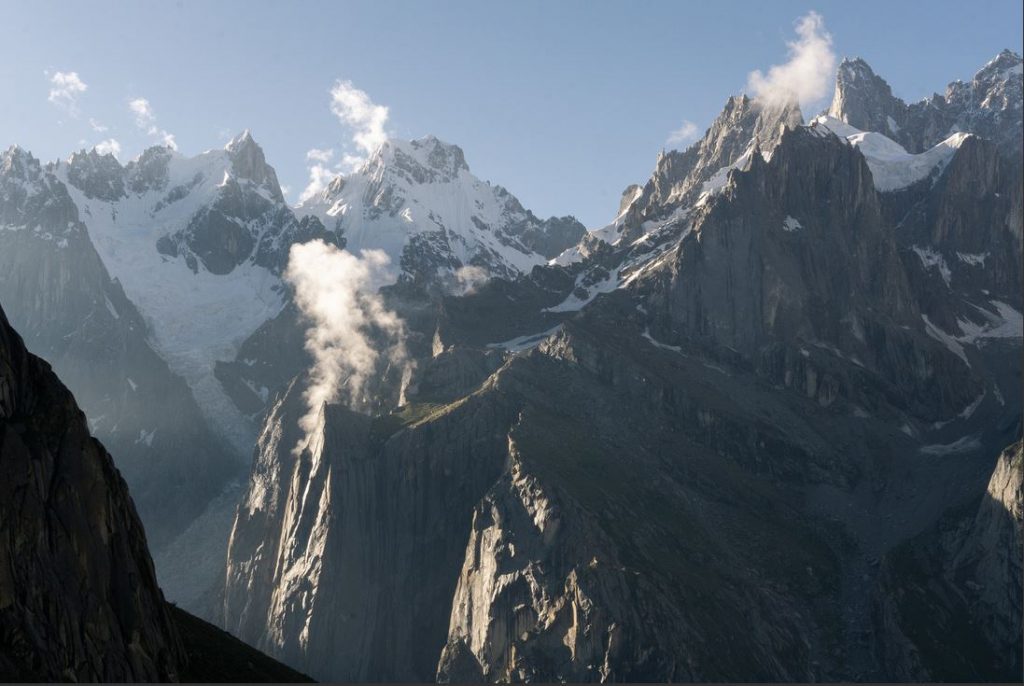
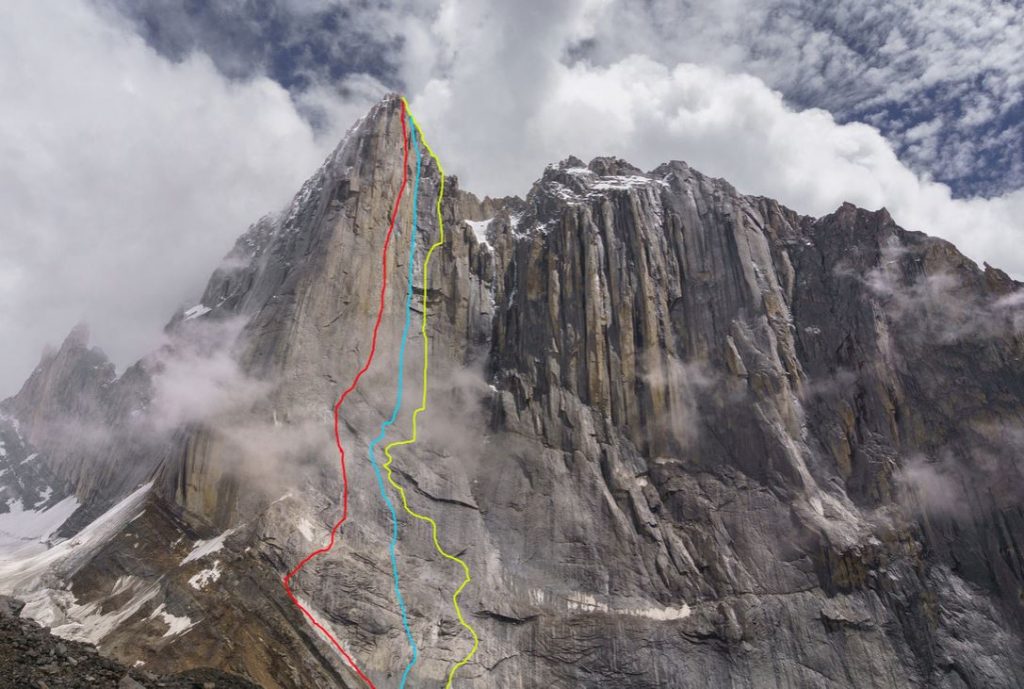
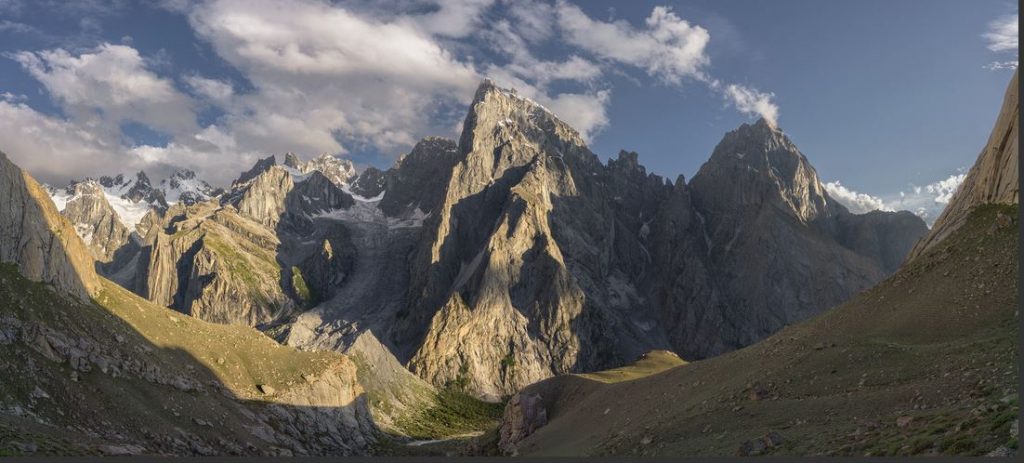
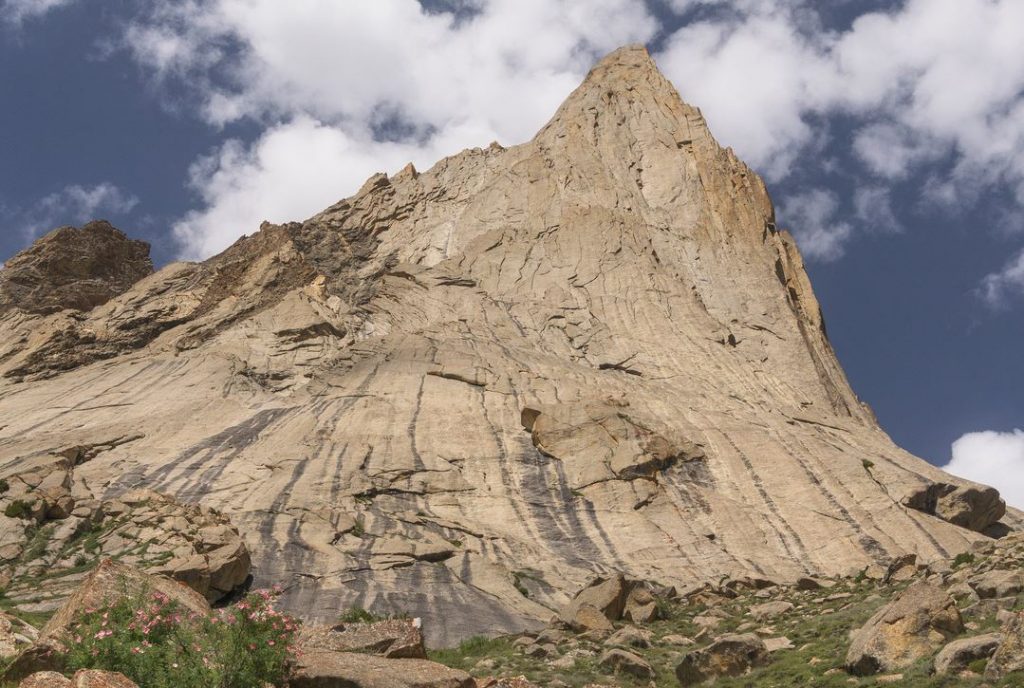
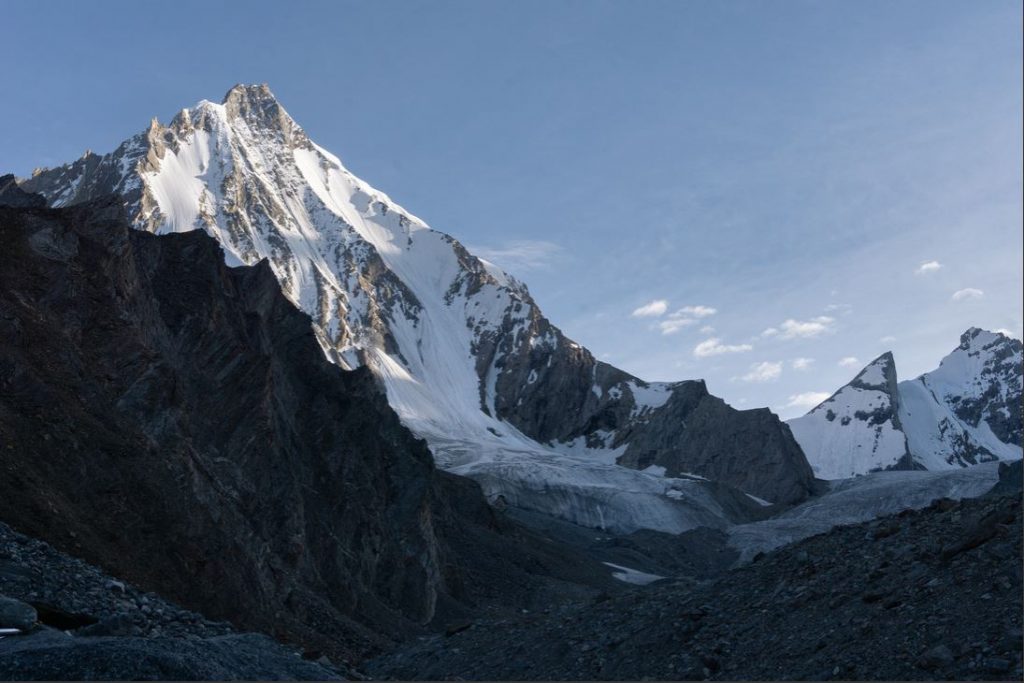
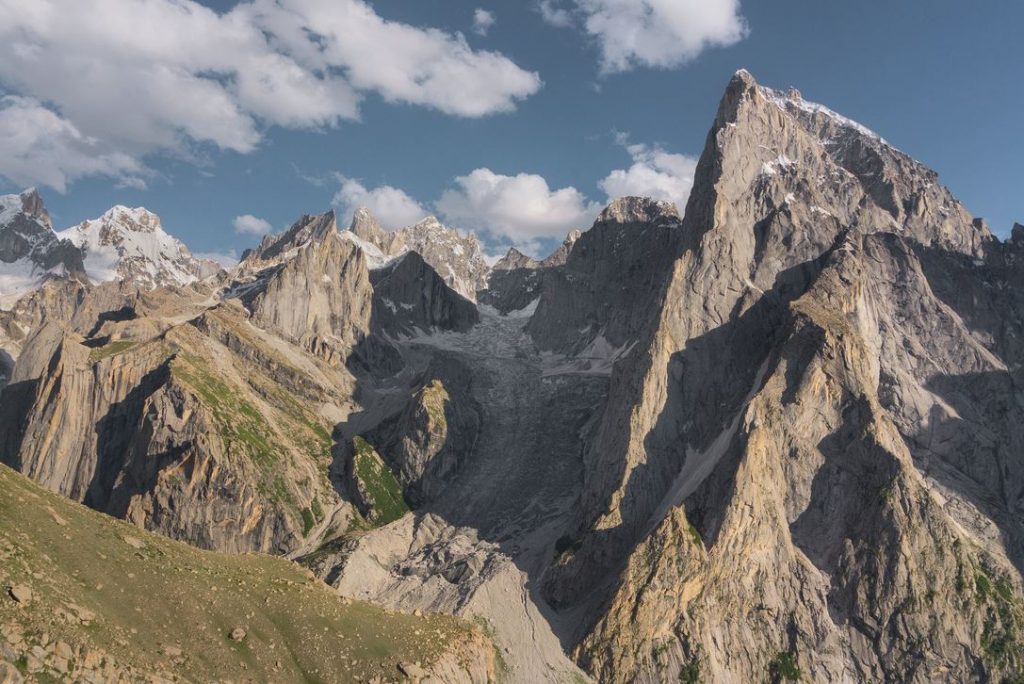
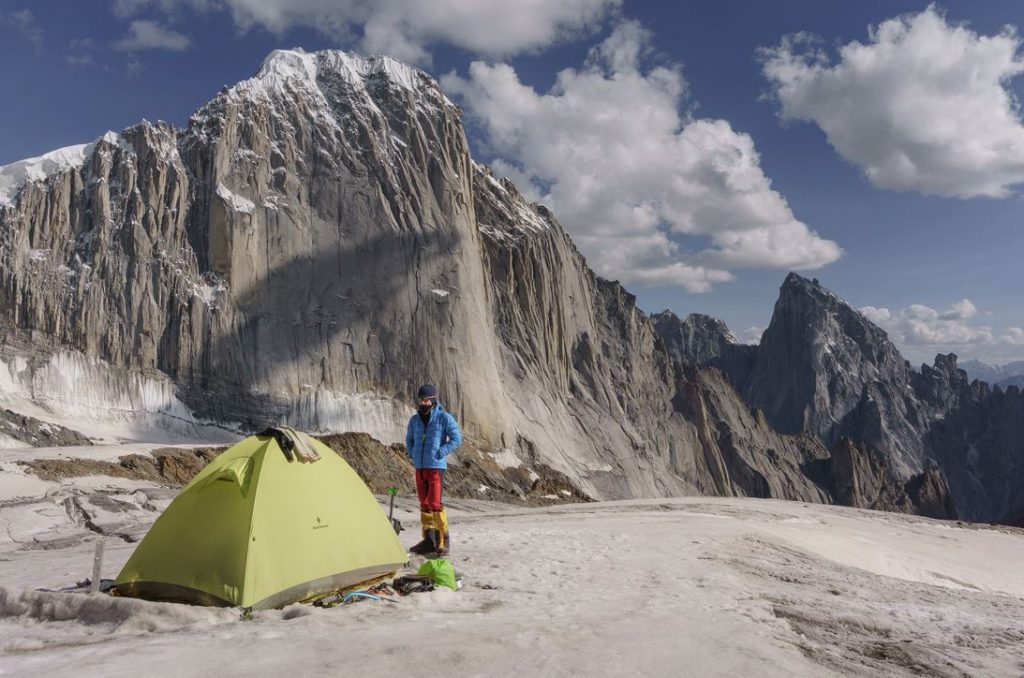
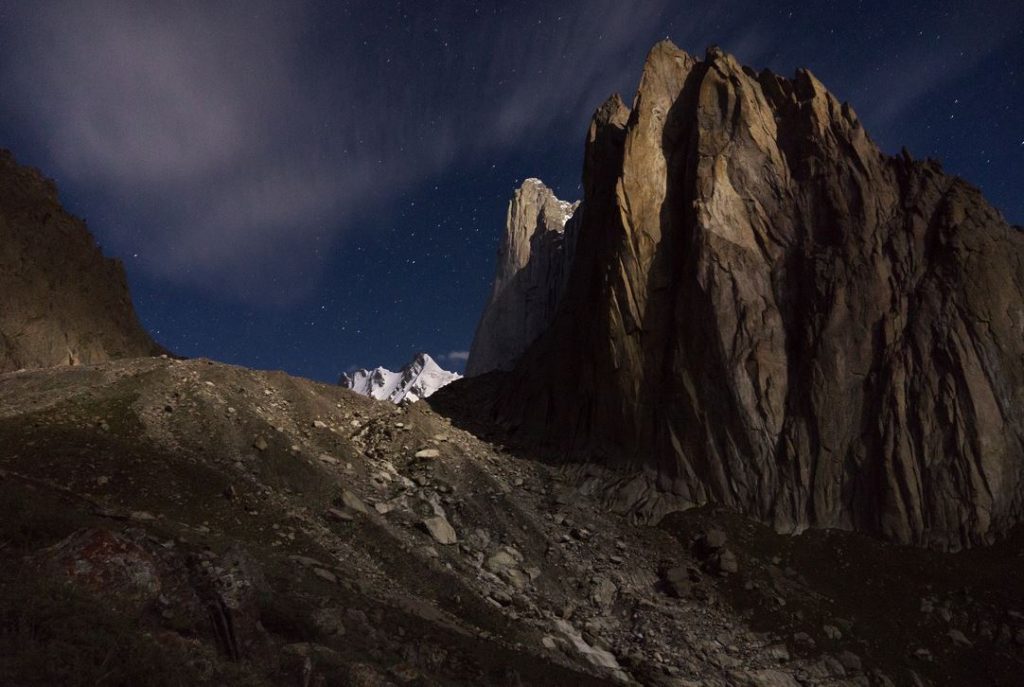
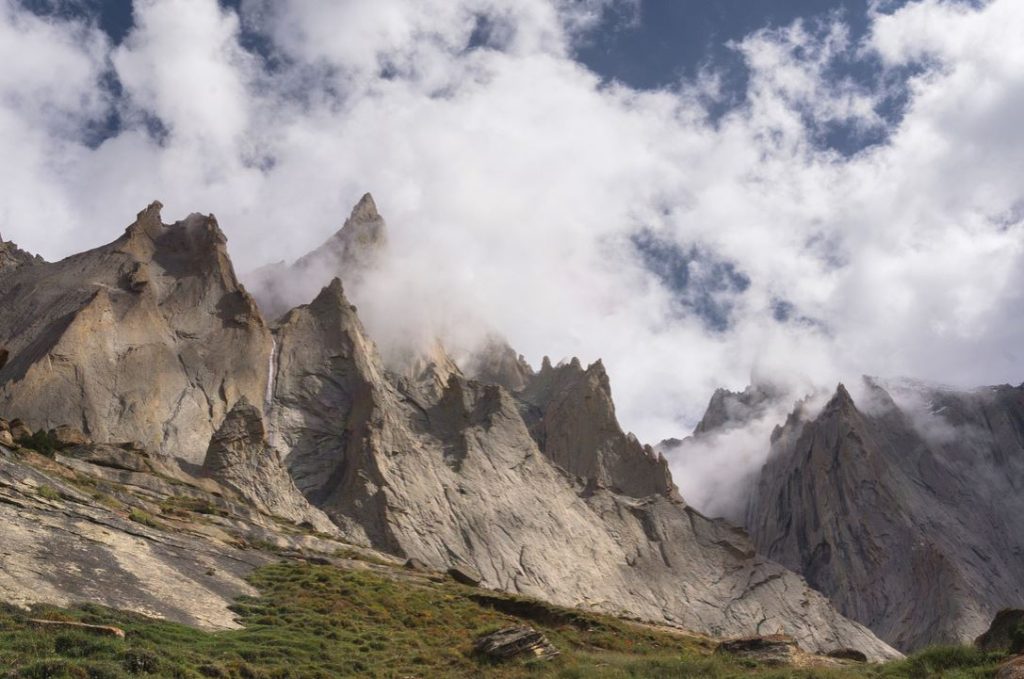
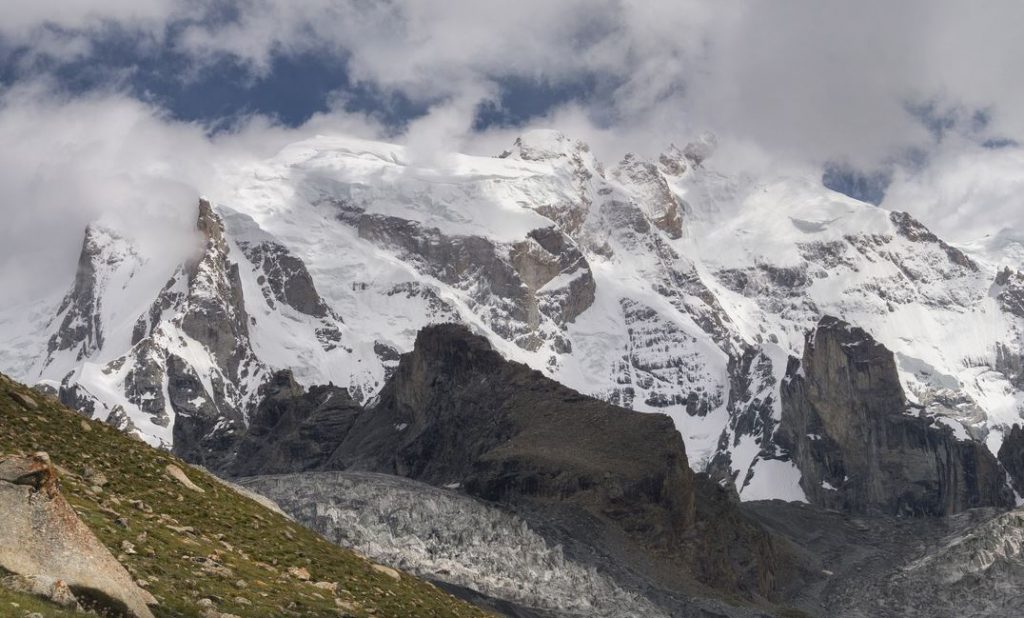
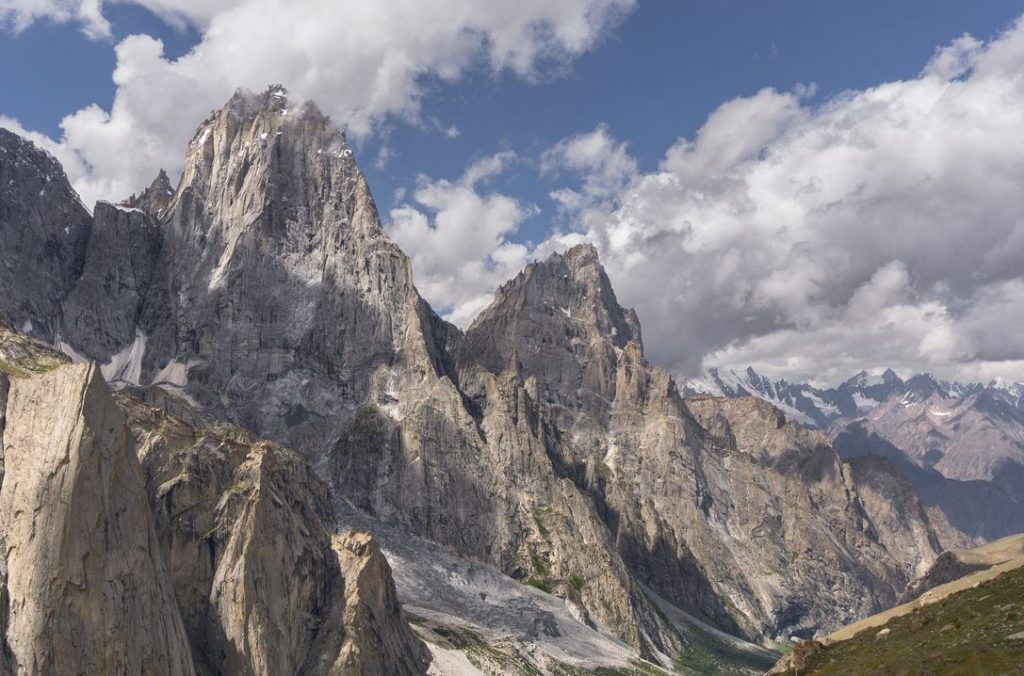
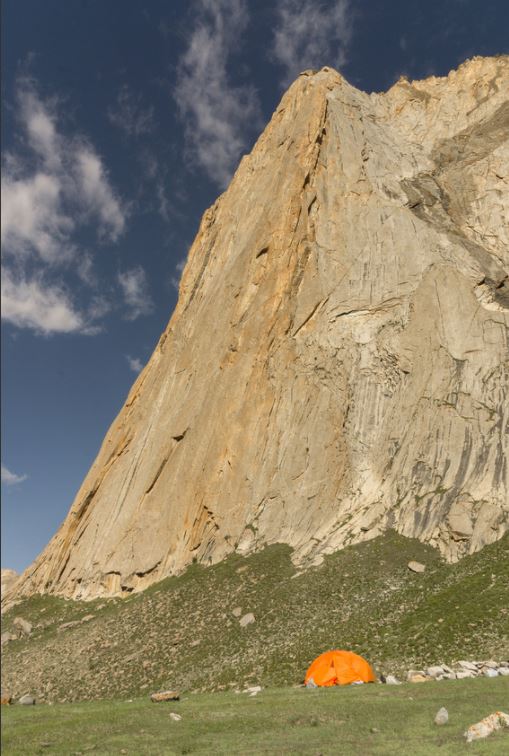
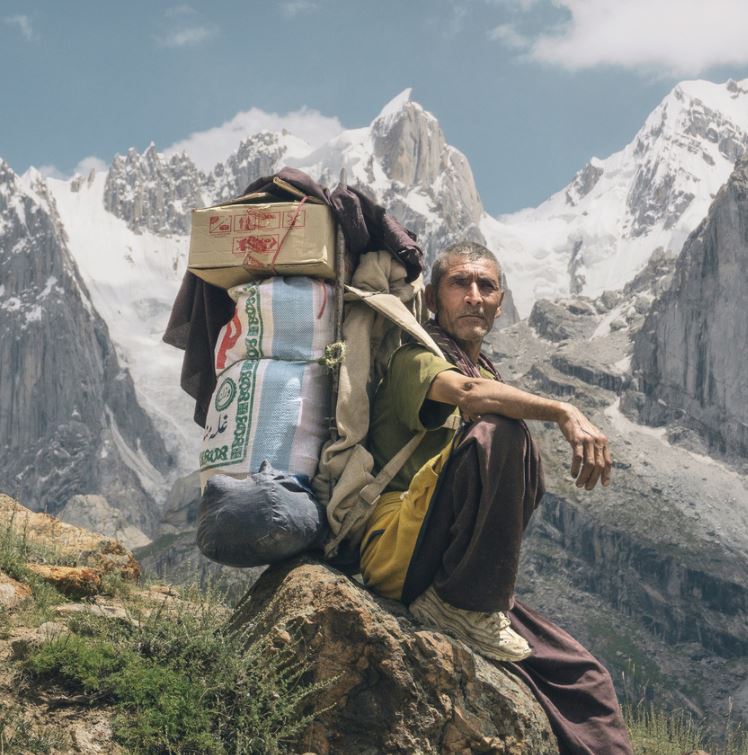
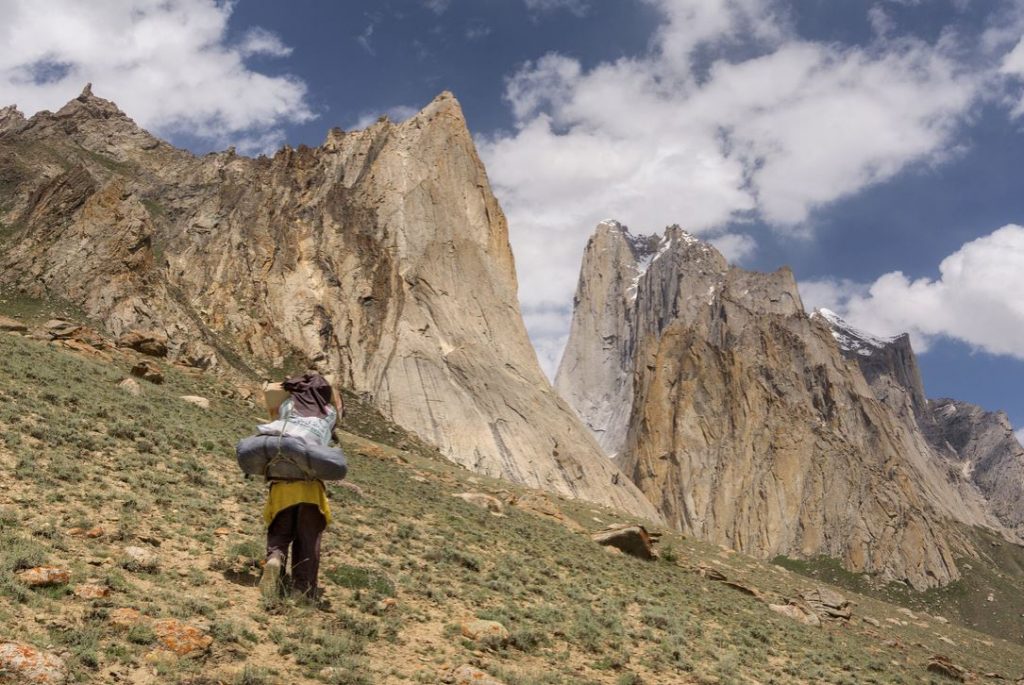
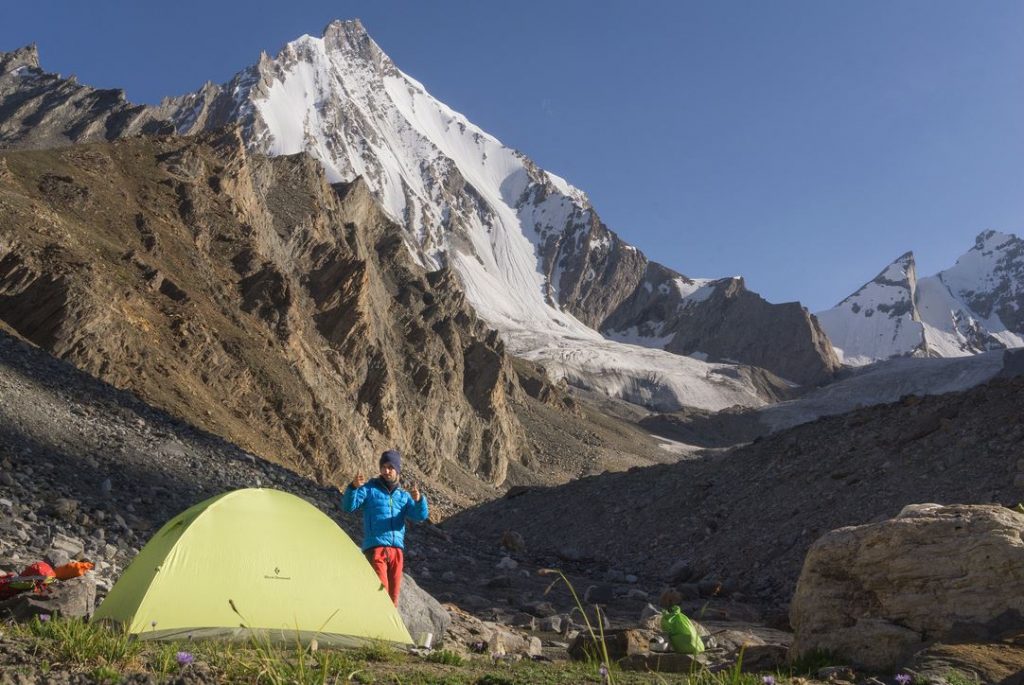
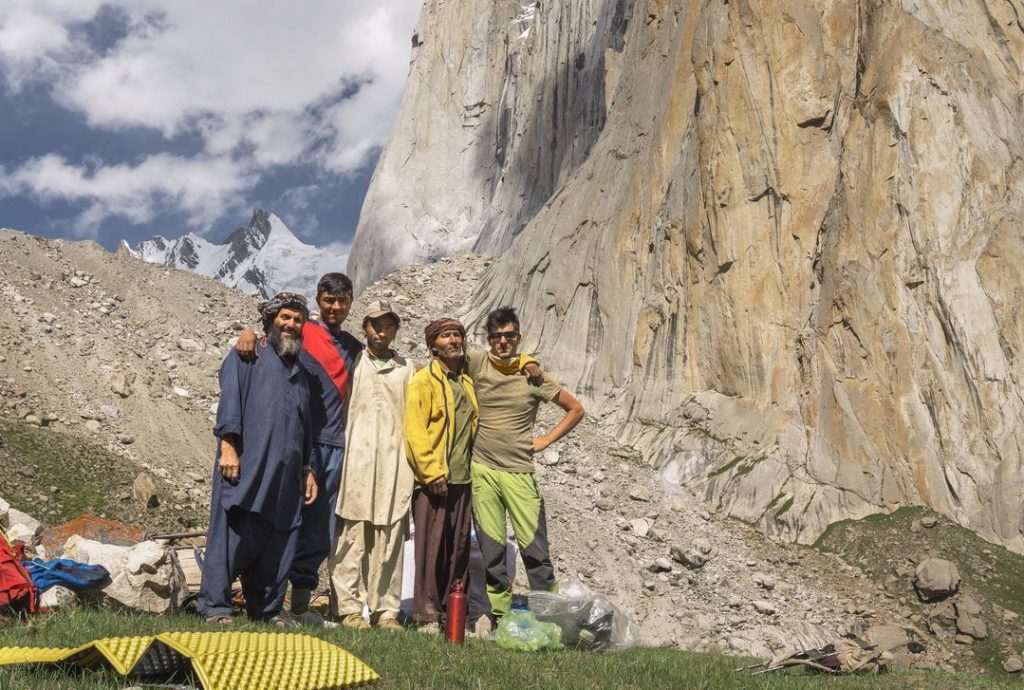
[:]
